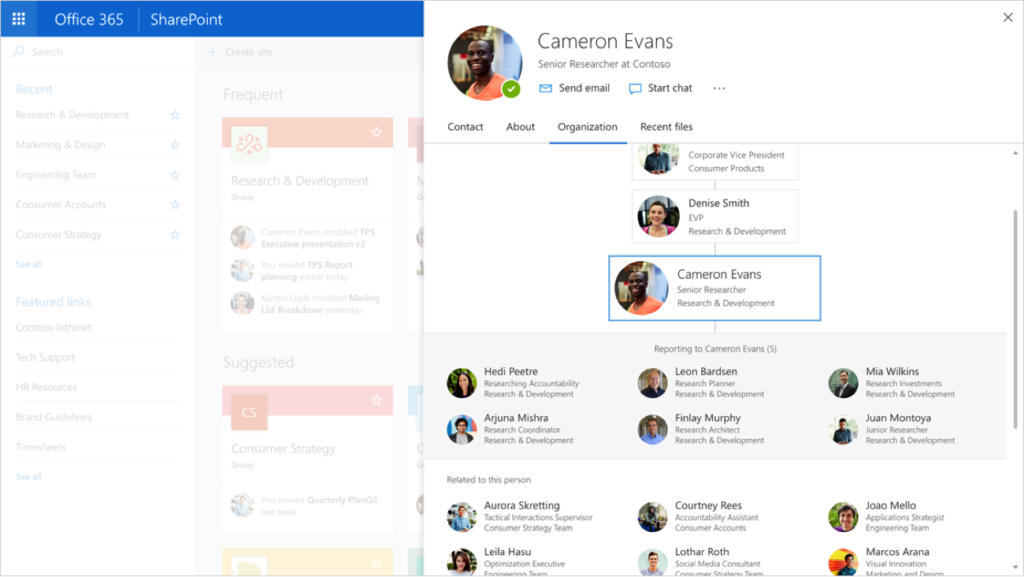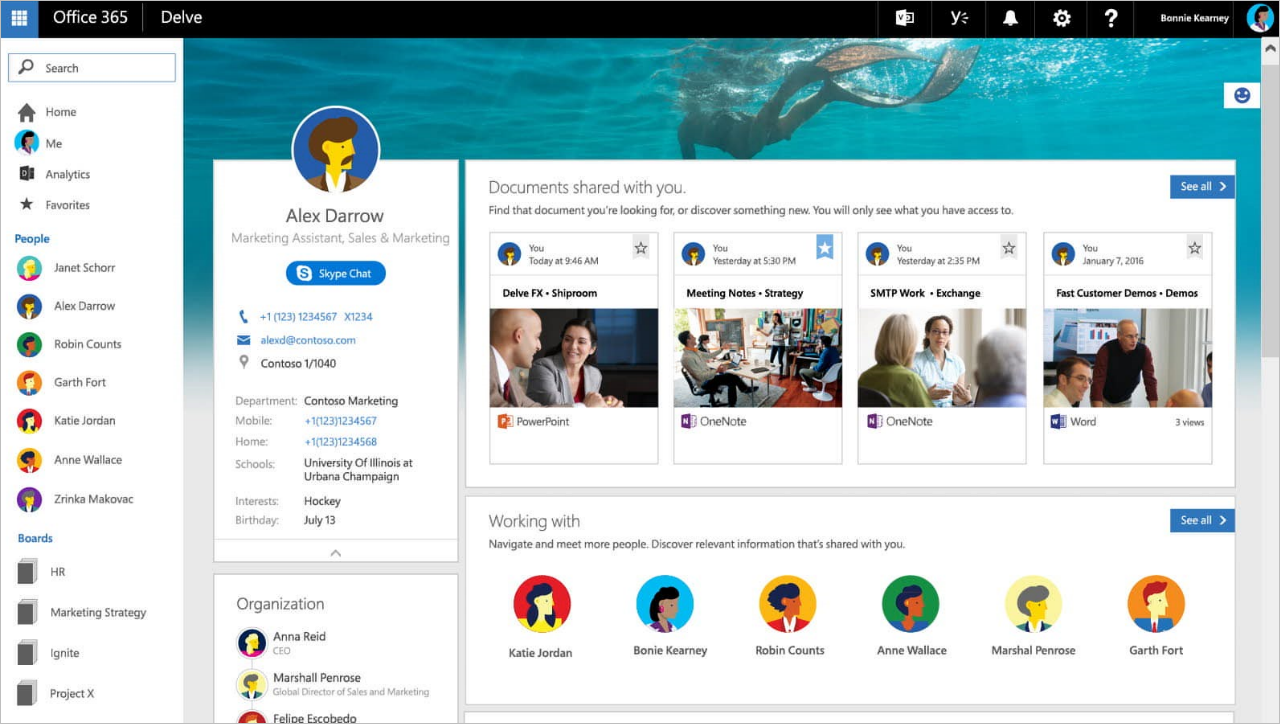If you’ve been following the office productivity and collaboration software segment, you may have noticed how fast and furious Microsoft has become at rolling out updates, additions and features to its Office 365 suite of applications.
In a recent article, we covered their major announcements in that area over the past several months. The one they added last week might seem insignificant: a profile card that gives you details about the colleague you’re chatting to or collaborating with. But it’s loaded. Here’s why.
Microsoft launched Office Graph on March, 2014 when Jeff Tapper, Corporate Vice President of Office Service and Servers group wrote about the need to flatten information flow within Organizations. In a blog post, Tapper wrote:
“By leveraging insights from Office 365 and mapping the relationships between people, groups, files and conversations through machine learning, we can intelligently connect and surface the most relevant content using the Office Graph.“
Microsoft used Office Graph to personalize and improve the contextual experience of users by collecting content, activity and relationships across the Office 365 ecosystem. The primary objective was to map the organizational relationship between people, their roles and their tasks, and utilize it to improve information flow. As Jeff Tapper says, to flatten the flow of information as much as possible.
Microsoft has now extended that objective and brought in more clarity for individual users by adding a profile card, like the one you see below:

In a large organization with thousands of employees, it’s great to know who you’re dealing with at any given point in time. Of course, their designation is probably on their email address, the company’s internal website and so on, but having the information to hand while you’re in the middle of a conversation with that person isn’t always possible.
Profile cards now makes that possible within Office 365. In addition to that person’s details, there’s also an Organization tab, which tells you the user’s position in the company, who they report to, who their direct reports are and who their peers are.
The cards also make it easy to look up the contact details of that person, and quickly initiate an email, chat or even a Skype call. It also shows you what files are shared between the two of you.
“We’re integrating the new profile card everywhere you see a person’s name—but it’s important that the experience doesn’t interrupt your productivity. We’ve made it easy for users to achieve these tasks with as little interruption to their workflow as possible. Hovering over a name provides a quick look at their most important attributes, such as contact details, recent documents and manager. More details are only a click away with the extended flex pane that displays additional information without navigating from the page.”
Most companies who are using Office 365 will already have profiles and membership roles established for their employees. What Microsoft has done is expand that by bringing more structure and clarity within office communication, and using data which companies already have anyway.
It may not be a pathbreaking innovation, and may even be seen as a trivial functionality, but it addresses an important pain point in intra-office communication.
Microsoft is initially rolling it out to Office 365 users of OneDrive for Business and SharePoint Online. Over the next few months it will be rolled out system-wide for all Office 365 subscribers.
Thanks for reading our work! We invite you to check out our Essentials of Cloud Computing page, which covers the basics of cloud computing, its components, various deployment models, historical, current and forecast data for the cloud computing industry, and even a glossary of cloud computing terms.



